DCS World Supercarrier The Most REALISTIC Combat Sim Experience.
Supercarrier Introduction!
DCS World Supercarrier operations are very much a challenge to new pilots and certainly very challenging. If you have dreamed of flying your F-18C with realistic ground crews and radio communications this module by Eagle Dynamics you will find it amazing. The USS Nimitz is a nuclear powered supercarrier carrier with over 6000 crew plus an air wing of 90 aircraft.

There are four steam powered catapults and 4 arresters wires on the angles deck. It is possible with the camera views to be at the Landing Signal Operator (LSO) position and review landings with ALT + F9. If you use Nvidia Shadowplay you may wish to reassign this key binding. The Nimitz has formidable self protection with RIM-7 Sea Sparrow missiles and RIM-116 Rolling Airframe Missiles as well as a barrier of Close in Weapon System (CIWS) gun system as a final defense.
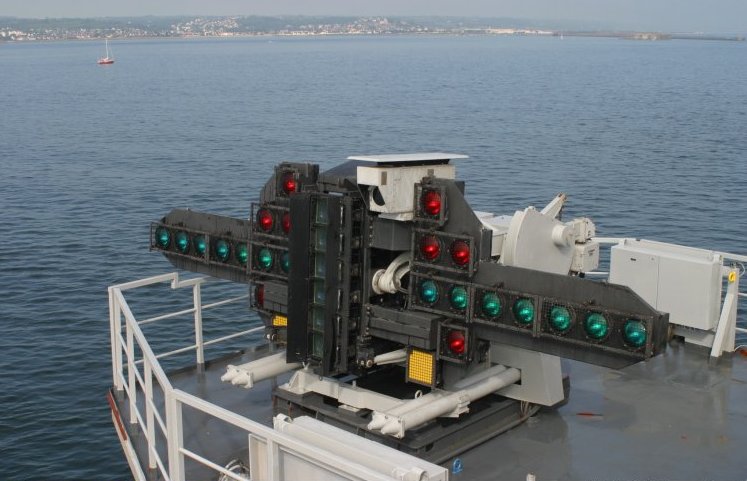
It is possibly the most realistic feeling environment I have encountered in DCS. There can be multiple aircraft taxiing and taking off as well as landing on the carrier. The ground crews at the catapults operate and invite you to the four catapults to start your next mission.
Supercarrier Guide Location Guide
Knowing your way around the deck is certainly important. There are four catapults situated at the bow and waist positions. The parking areas as well as lifts are located in convenient places and are operational so don’t park on them. There are plenty of places to add parked Ai aircraft and player useable aircraft for online battles.
DCS World Supercarrier Flying The Ball
The ball has been around for many years now and is the primary tool for guiding pilots safely to the deck of this supercarrier safely. The ball consists of a number of lights giving you a complete series of guidance in both your decent path as well as wave off or go around instructions which is all controlled by the LSO. High, Low and on flight path as well as a wave off signal.
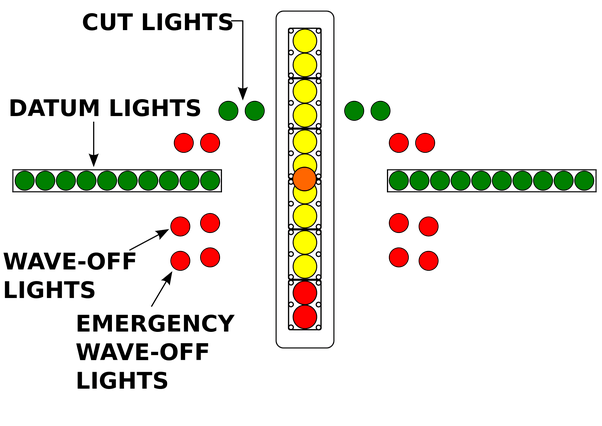
When flying your approach to the supercarrier its important to be lined up with the runway which is also assisted by some lights at the stern of the ship. Your ideal flight path with have the orange central light lined up with the green center row of lights.
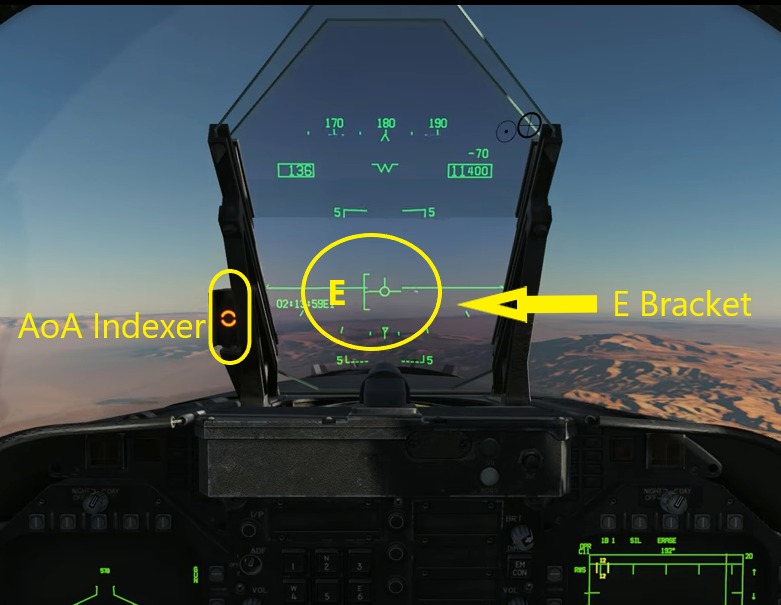
This light will move up the row of Yellow lights if your getting high on the decent path and alternatively down if you getting low. If you get to low the lights will flash red to give you a wave off and you go around for another try. The green cut lights tell you to chop power for your touchdown at the appropriate point aiming for the number 3 wire for the rating of GOOD.

Flying the Ball! The Ultimate Flying Challenge!
Flying any aircraft onto a supercarrier is a challenging job and requires a good feel and understanding of Angle Of Attack requirements. This is crucial to ensure the aircraft can fly in the best configuration to land and ensure the arrestor hook is at the correct angle to catch the wire on landing.
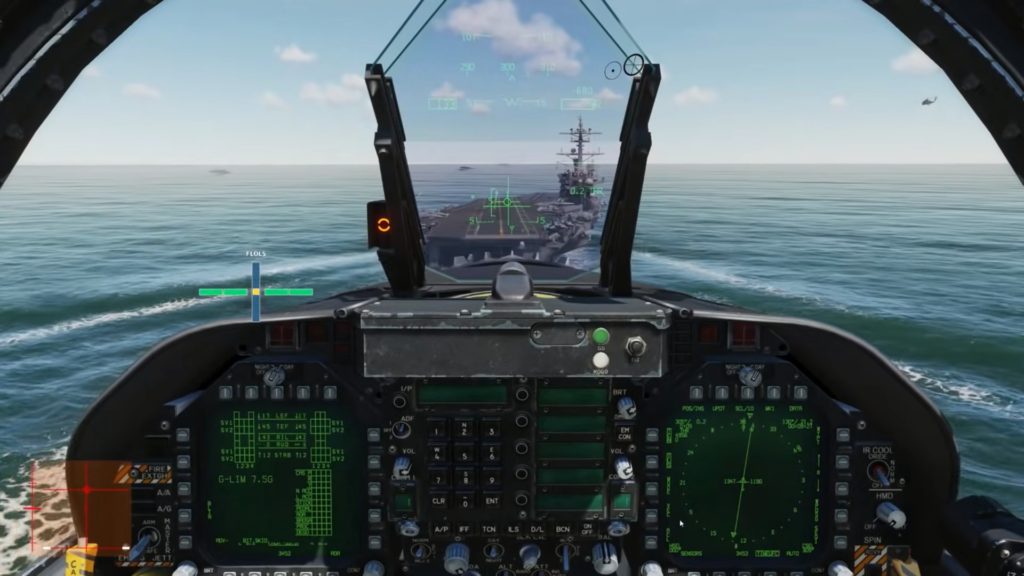
In the picture you can see the BALL superimposed next to the HUD. This makes it easier to see the ball as its hard especially in virtual reality. The yellow ball when centered means your on glideslope. If the ball moves up your getting to high and if it moves down it means your low of glide slope.
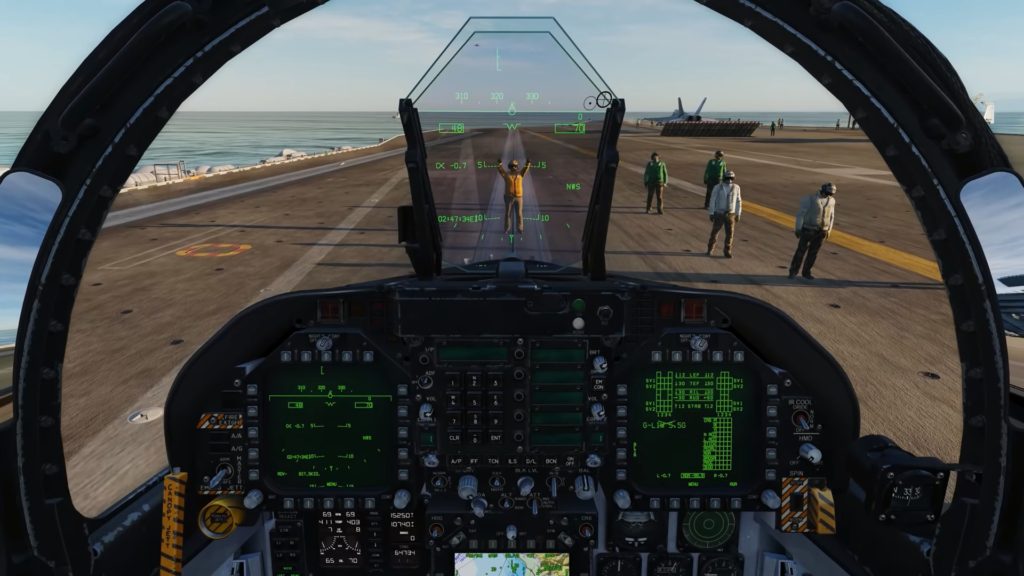

On Angle Of Attack (AOA).
Your need to attain the correct AOA is the orange circle next to the HUD. If the green light above lights your to SLOW and the green lights below the orange circle mean your to FAST. The “E” bracket is visible within the HUD (Heads Up Display). This is used with the flight director and managing speed will keep the flight director within the E bracket in the HUD.
In the picture below it’s showing correct AoA (Angle Of Attack). If the flight director moves up the aircraft is to fast and at the bottom to slow. It requires constant correction on the throttles through turns and the approach. It will take practice just getting this correct and be consistent. I would highly recommend the T-45 Goshawk jet trainer FREEWARE module to get some practice.
DCS Supercarrier Animated Crew
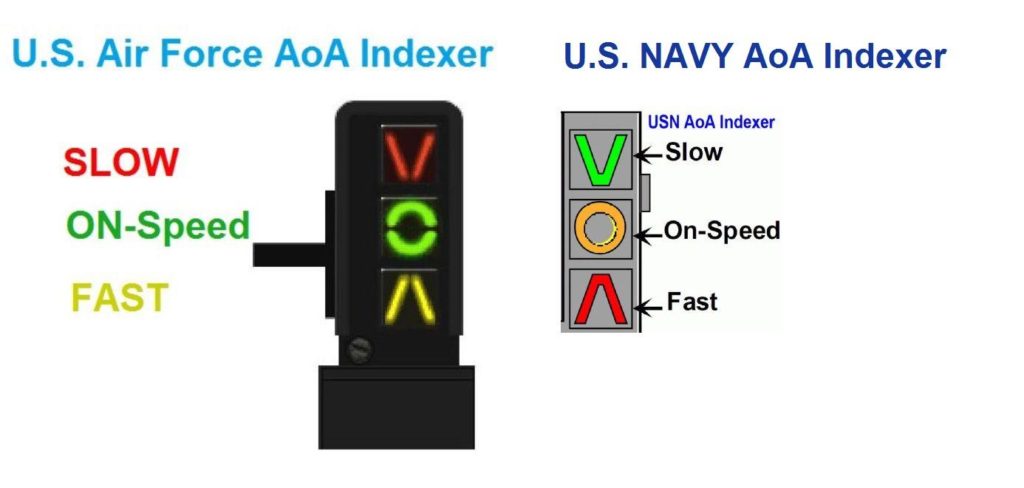
One of the amazing features of the supercarrier I feel is the use of animated characters on the flight deck. These characters have jobs to do and just give you that feeling especially in Virtual Reality of actually being there. The yellows shirts guide you into position with the green shirts connecting you to the catapult. You need to learn the hand signals they give you so you can comply with their instructions.
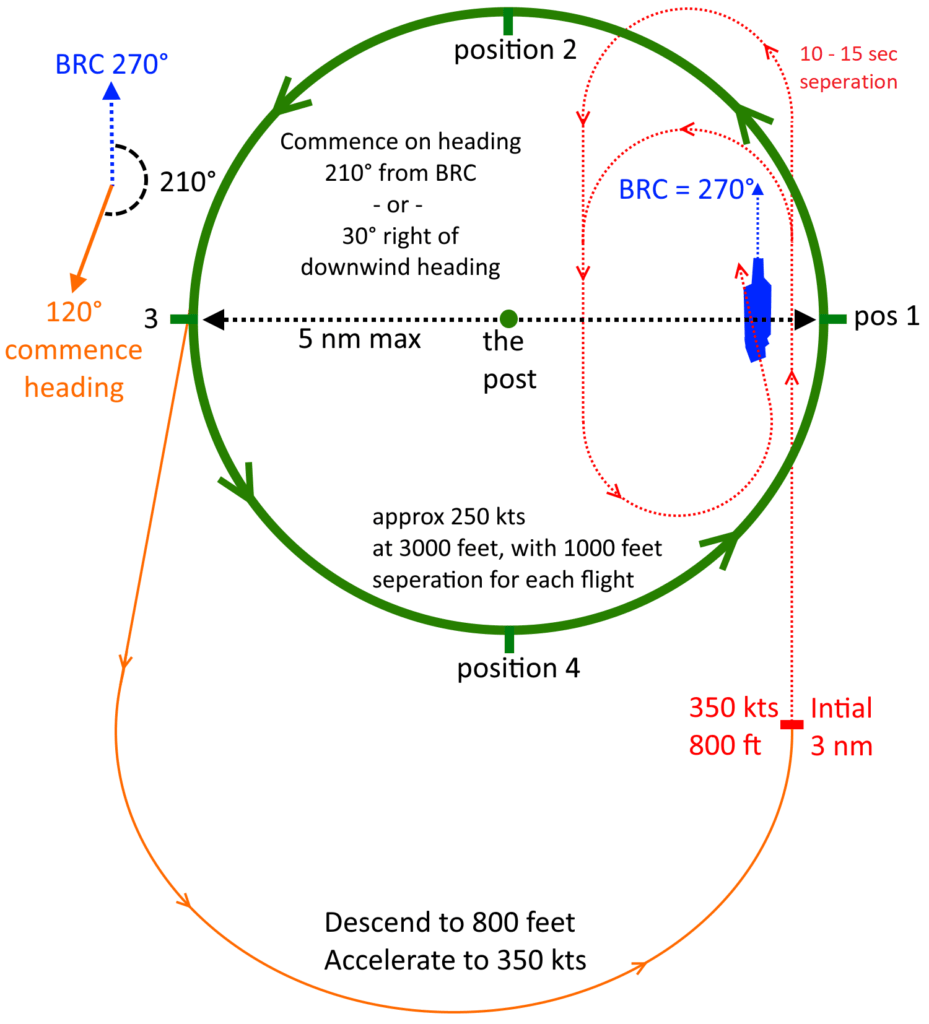
The waving of both arms means to come forward toward the director. When there is one arm out to the left of right you need to turn in that direction. Both hands above his head with clenched fists means brakes on. Unfolding one arm indicates to lower your launch bar to be connected to the catapult.
Flying The Pattern on the Super Carrier.
Flying the pattern on the DCS World super carrier starts with knowing the altitudes you must fly as well as the speeds. Aircraft carriers can be super busy so the first place we start is the 2000ft holding pattern on a 5 Nm.
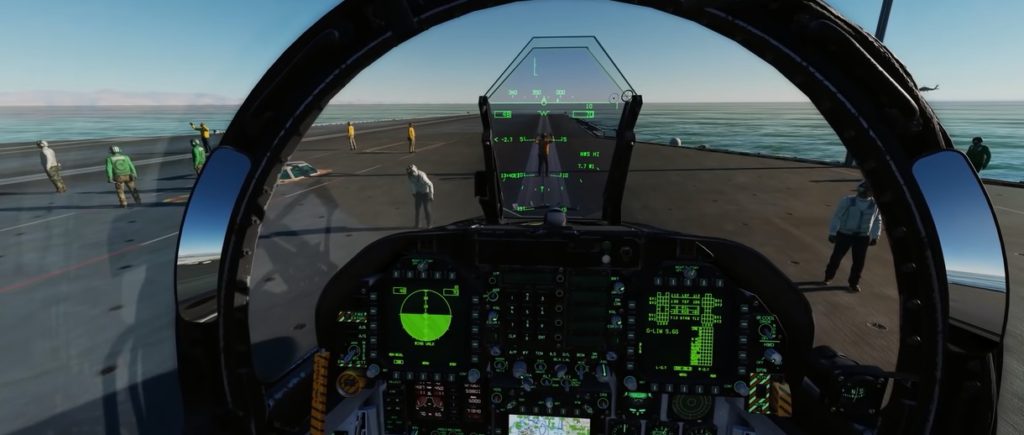
The pattern is flown at 350 knots in the F-18C for example and you orbit until given permission to join the landing pattern. The supercarrier landing pattern entry requires you descend from 2000ft to be at 800ft parallel to the carrier at POS-1 at 350 knots and be located so you can see the deck is clear yourself to make your landing.
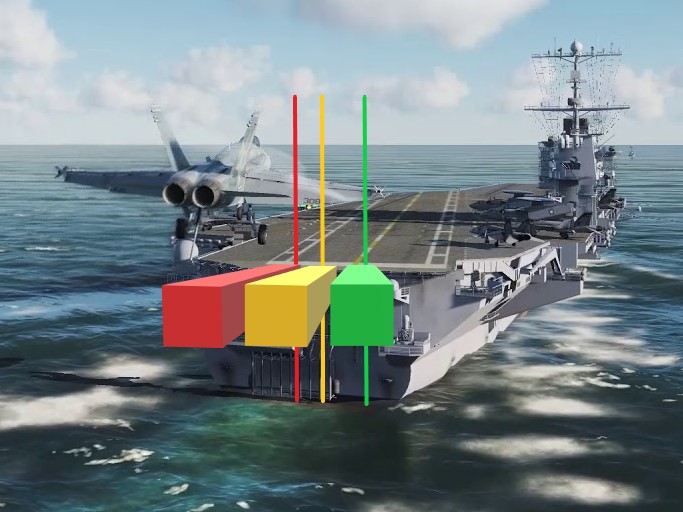
Fly out 10-15 seconds then break left and join the downwind parallel to the path of the super carrier. At this point you slow to get your flaps and gear down and your speed under control. You will also need to lower your arrestor hook in readiness for landing. You will start your base leg turn with about a 30deg arc to line up with the rear of the boat remembering the angled deck.
You will require to make a call know as the Ball. This call you identify yourself and your fuel remaining. This is important because they then know if you may need to go top up your fuel.
You then fly the approach where the LSO (Landing Signal Officers) will guide you with calls over the radio that you do not need to respond to. You will get lined up left or right or your high or low and the one you don’t want is wave off if your landing is poor and getting dangerous.
Landing and Getting a Wire on the Supercarrier!
Lining up with the rear of the Supercarrier is important and there are some lights at the rear of the boat. There are three lights located below the landing deck to help you in addition to the ball lights.
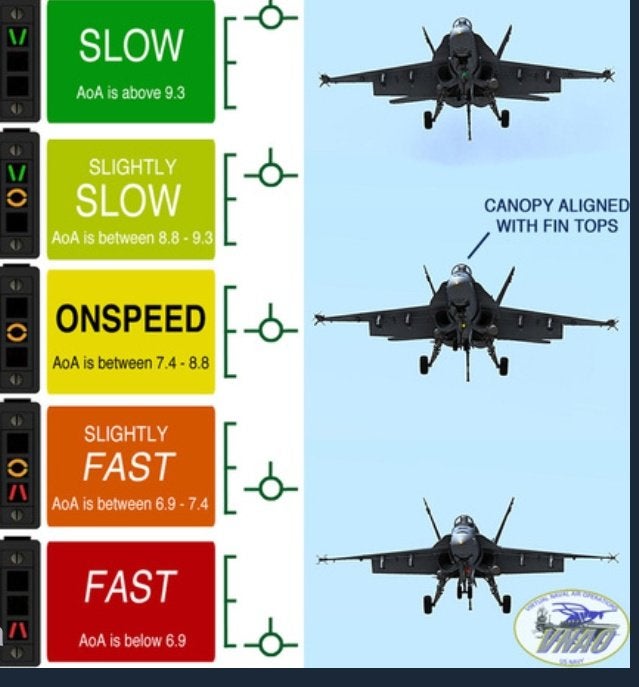
If your Left of the centerline the light will show RED as you are on the port side. If your inline you will see an ORANGE light. If your seeing a Green light then you are starboard or to the right of center. It will flash if you’re either too far either side. If its solid then it’s likely you’re only a little off line.
Landing Signal Officer. LSO
The Landing Signal Officer (LSO) position on the ship is on the left waist of the supercarrier. This gives you an interesting place to watch online landings and guide people onto the boat. The diagram shows you what the aircraft is doing by just looking at visual question while viewing the aircraft. You can access the LSO position by using ALT + F9.
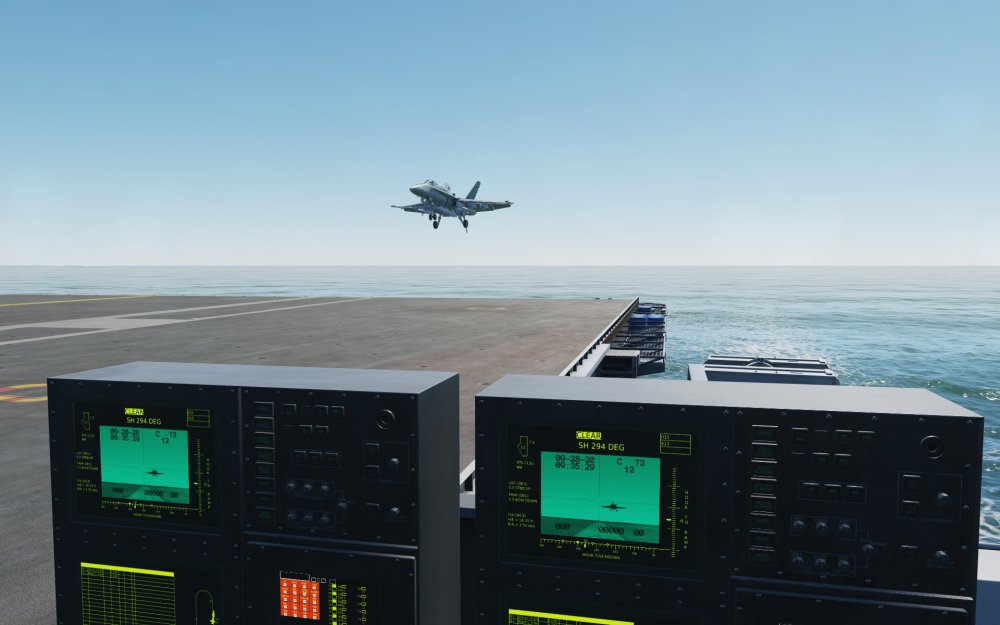
This is an inconvenient key bind if like myself you use Shadowplay to record as it uses the same key binding. I have now moved this to a new key binding and left Shadow Play as it was.
Taxiing and Moving on the Deck.
Once you have landed or if your ready to start up and taxi to your catapult for launch. You firstly want to hit your MENU key and request a TAKE OFF. This will ensure the animated ground crew will help you take off no matter what catapult you taxi to.

You will need to fold the wings and be careful where you taxi as always being careful of aircraft landing and any AI or multiplayer aircraft moving around the deck. The deck of a carrier is a dangerous place so always be careful and keep your head on a swivel looking for dangers. To get to the LSO platform is ALT + F9 : (You may want to change this if your record with Shadowplay.)
Launching on the Super Carrier
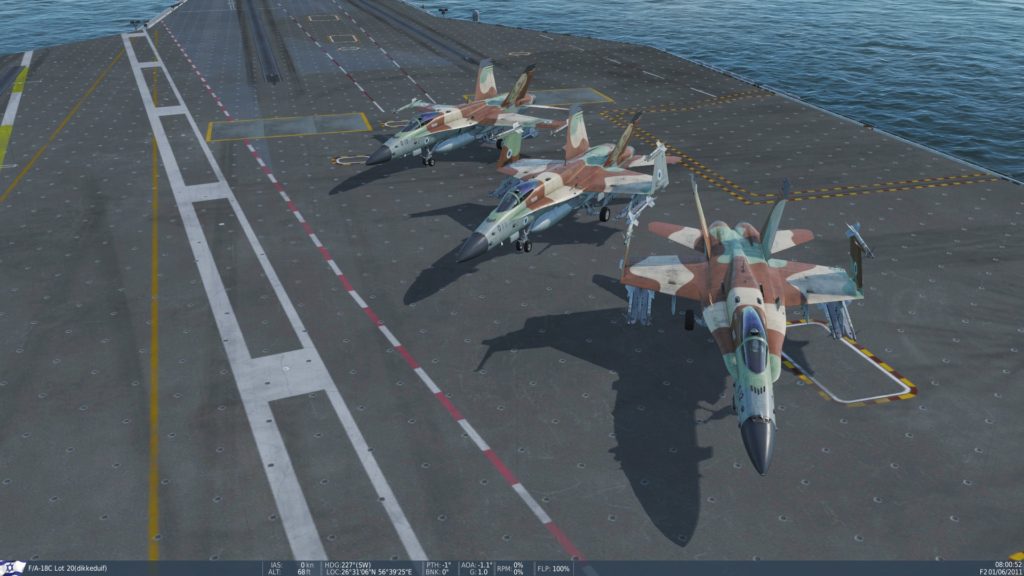
The Main menu will allow you to communicate with the Supercarrier crew and get everything to request launch which will make them help you instead of just standing there. There is another frustrating command you need to bind to a button and that’s SALUTE = F6.
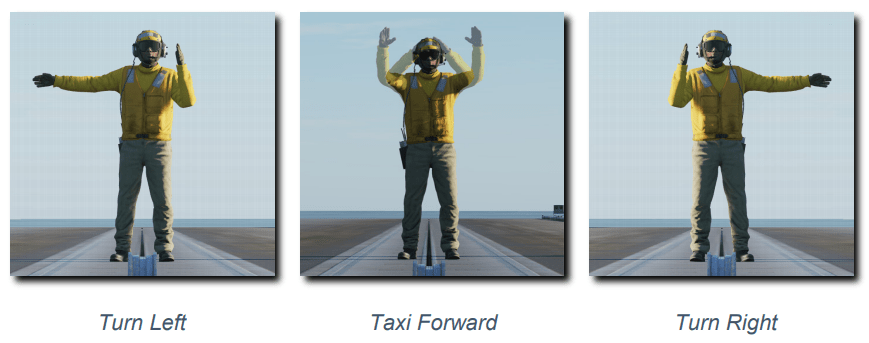
If you don’t salute they will stand there till infinitum telling you to wind up your engines but won’t launch you. This is a Naval protocol and a bit of cool realism. Just be aware and your day will be awesome.
On the Catapult! Now or Never!

As you taxi up behind the blast deflector look to the yellow jacket and he will start to direct you into the correct position. The green shirts will hook you up and have the pretensioner installed. This is like a pipe that goes behind the front wheel and I believe ensures good pressure is built up before the catapult fires.
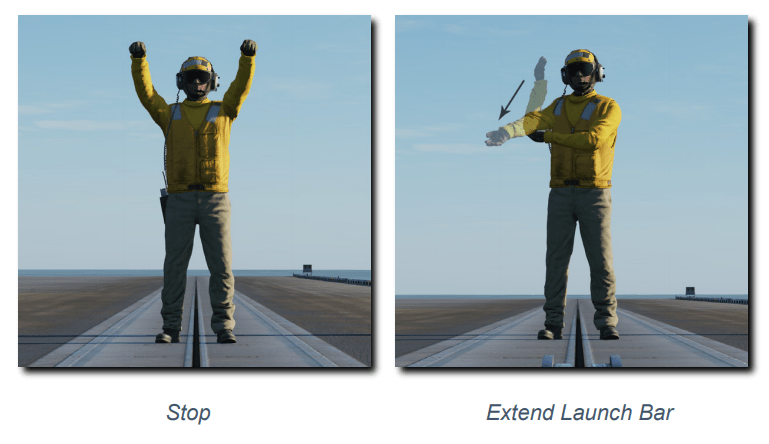
Catapults fail as does the arrestor cables on occasion so you have to be ready to takeoff or even eject. Its not known if failures like this can occur in the module so always be aware.
Marshalling Signals – These will get you Flying.
Its imperative you know the basics of marshalling so you comply with the instructions of the marshallers. I have done this for 20 years in the RAAF and contracting for BAe Systems in the Middle East.
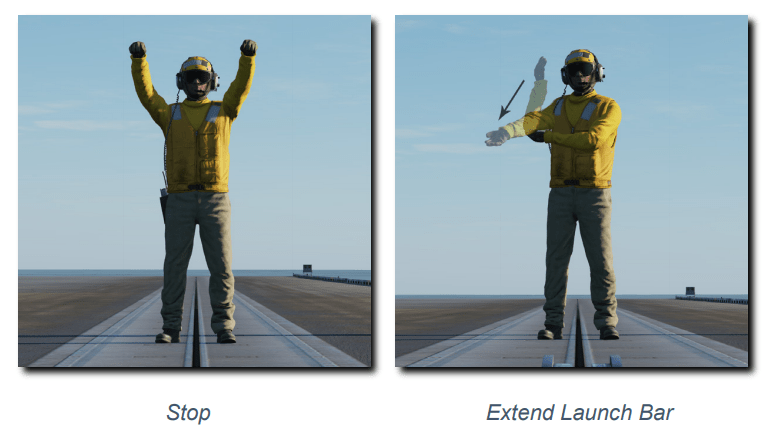
Its pretty simple so I have put them in the general order you will see them arriving at the supercarrier catapult. Turning left and right as well as come straight. Brakes on and lower launch bar signals will likely be first. Spread your folded wings is likely to be next so your aircraft can be configured for takeoff.
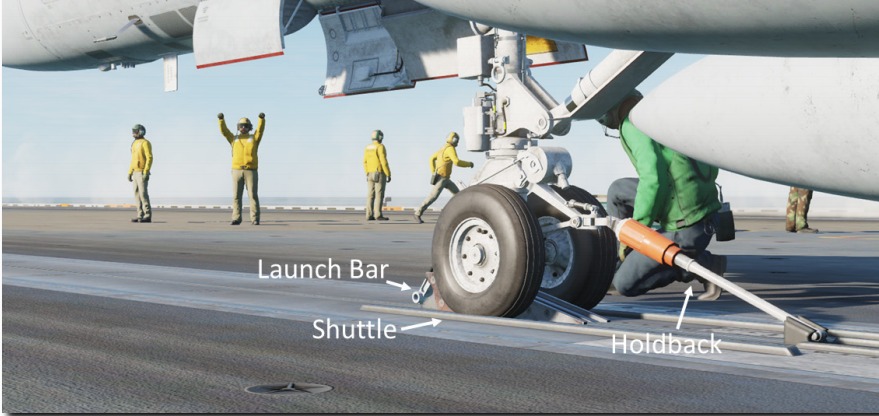
There are a lot more signals used but these will get you flying in DCS World. The circling fingers are to get you to spool up your engines and the obvious pointing down the runway is the launch signal. Remember to get this you need to salute by using F6.
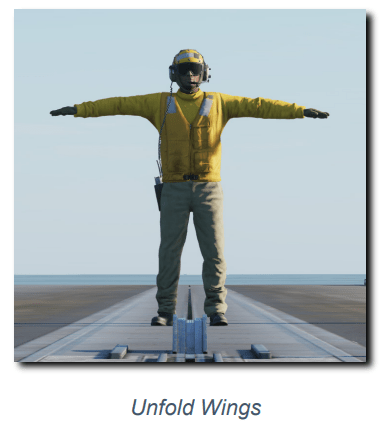
You should now have all the basic information you need to taxi, connect to the catapult with the ground crew. The take off is a breeze. Note once your hooked up you may have to put the power up to finalize the launch bar once initially connected to the hold back bar.
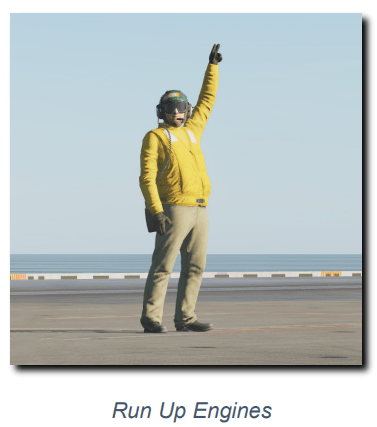
This is when the green ground crew come in close under your cockpit. It will eventually rock over the catapult and you will be ready to launch. Make a final check of everything and salute ready to take off. One further note when you have locked your launch bar in place you will be told to retract it.
Select it up so once you launch it retracts. You don’t want it extended when you land.
Your Ready to Fly!
I have personally been both very impressed by the DCS World supercarrier module. If your looking for some Naval aviation excitement then I am sure you won’t be disappointed with it. I would recommend the FREEWARE download of the T-45 Goshawk to get practicing. It is a lot less to handle while learning the aspects of carrier operations. Enjoy!

Author.
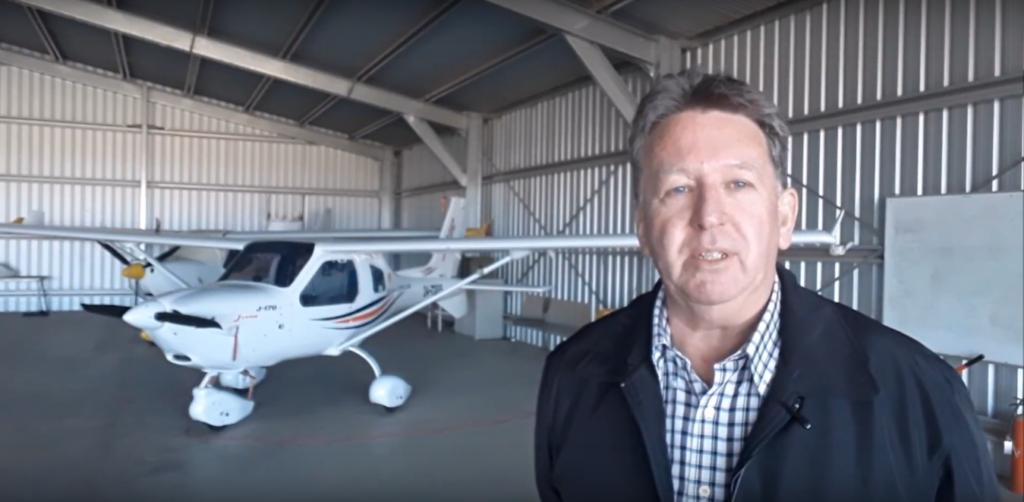
Brendon McAliece is a multi lingual-expat who brings over three decades of flight simulator/PC building experience as well as over two decades of real world jet fighter experience as a weapons/egress technician.
He holds a sport pilot certificate giving him real world flying experience. Hi travels have taken him from Europe to the Middle East, Asia and his home of Australia. He has a passion for travel, languages, flight simulation as well as guitaring and coffee. You can read more in his blogs below.
Learn more @
DreamingGuitar.com – DreamingCoffee.com – LetsFlyVFR.com
( HOME – BLOG – SHOP – ABOUT )
As an Amazon affiliate I may earn on qualifying sales.
This page has been viewed 0 times.